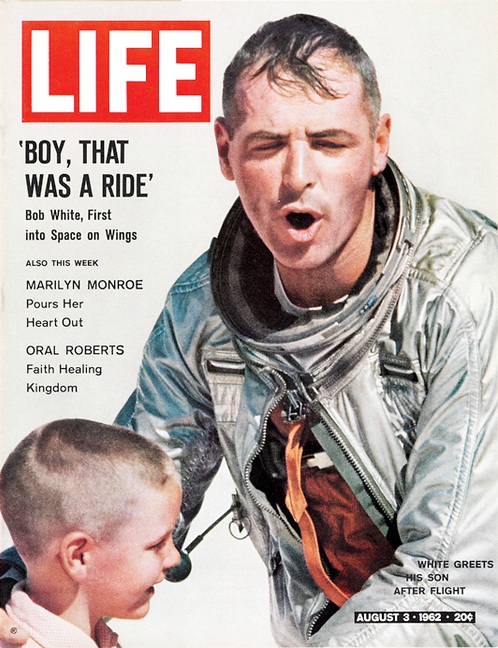
3 August 1962: Following his record-setting flight into space aboard an X-15 hypersonic research rocketplane, 17 July 1962, Major Robert M. White, U.S. Air Force, was featured with a cover photograph on the LIFE Magazine issue for the week of 3 August 1962. LIFE was the most prestigious news magazine of its time.
This was the first time that a manned aircraft had gone higher than 300,000 feet (91,440 meters). It was also the first flight above 50 miles (80.47 kilometers). For that achievement, Bob White became the first X-15 pilot to be awarded U.S. Air Force astronaut wings. His 314,750-foot altitude (95,936 meters) also established a Fédération Aéronautique Internationale (FAI) world altitude record, which will probably never be broken.
To qualify, a new record would have to exceed White’s altitude by at least 3%, or more than 324,419 feet (98,882.9 meters). As the FAI-recognized boundary of Space is the Kármán line (100 kilometers, or 328,083.99 feet), any prospective challenger would have to hit a very narrow band of the atmosphere.
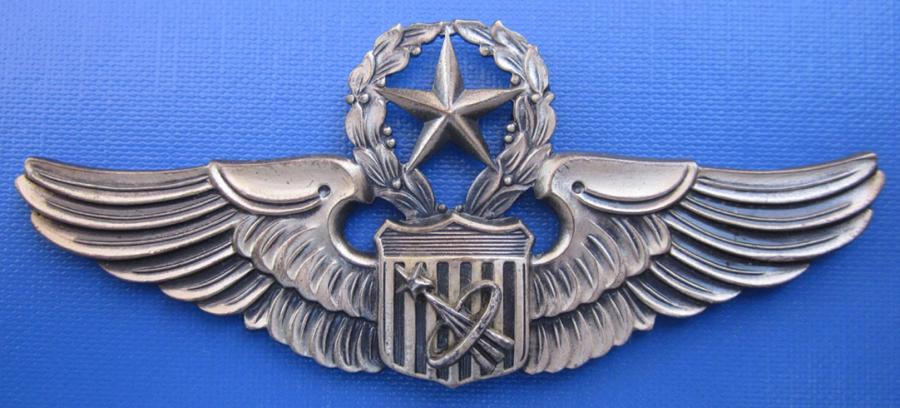
Major White had been the first pilot to fly faster than Mach 4, Mach 5 and Mach 6. He was the first to fly over 200,000 feet (60,960 meters), then over 300,000 feet (91,440 meters). He was a graduate of the Air Force Experimental Test Pilot School and flew tests of many aircraft at Edwards before entering the X-15 program. He made at total of sixteen X-15 flights.
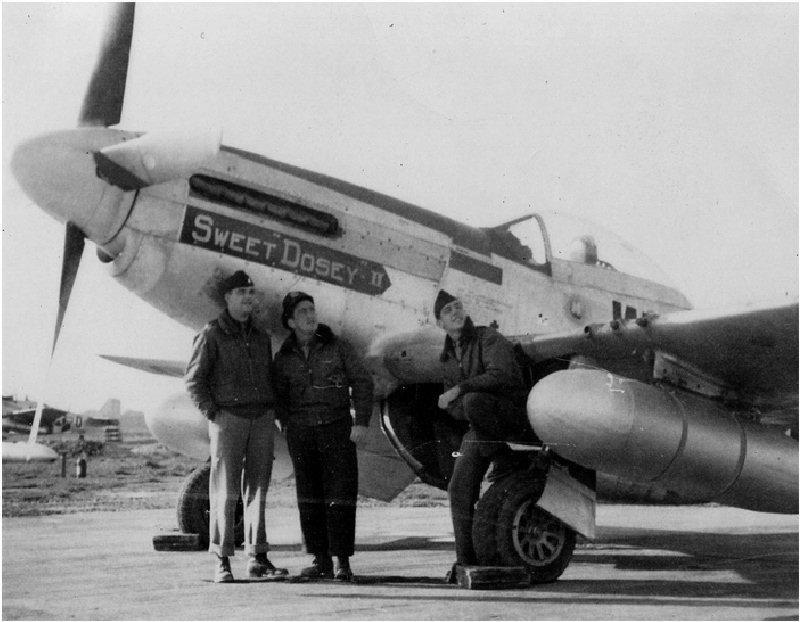
A P-51 Mustang fighter pilot in World War II, Bob White was shot down on his 52nd combat mission in February 1945 and captured. He was held as a prisoner of war until the war in Europe came to an end in April 1945. White was recalled to active duty during the Korean War and was assigned to a fighter squadron stationed in Japan. Later, he flew 70 combat missions over North Vietnam in the Republic F-105 Thunderchief supersonic fighter bomber, including leading the attack against the Paul Doumer Bridge at Hanoi, 11 August 1967, for which he was awarded the Air Force Cross.
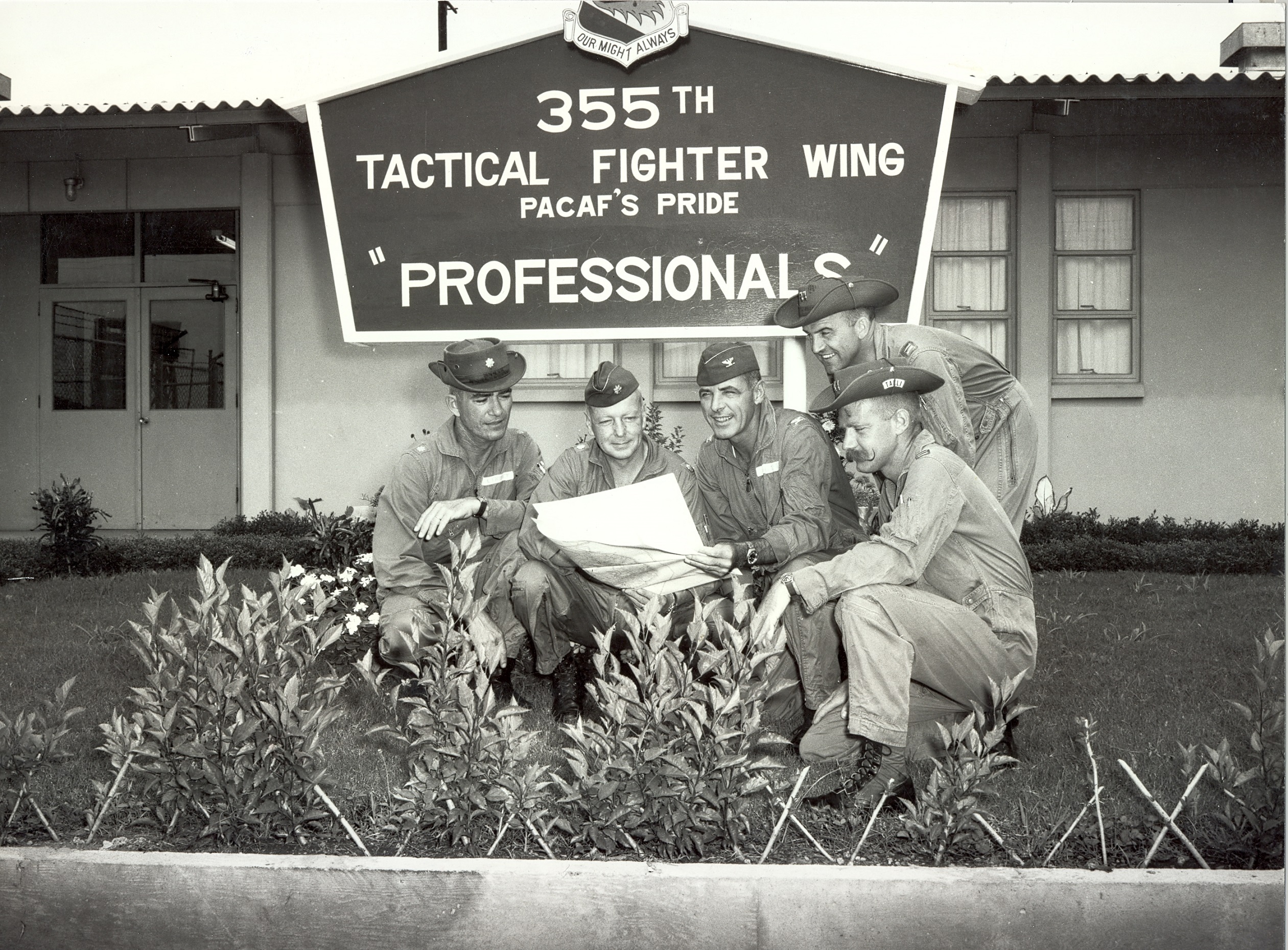
Colonel White next went to Wright-Patterson Air Force Base, Ohio, where he was director of the McDonnell Douglas F-15 Eagle systems program. He then returned to Edwards Air Force Base, California, as commander of the Air Force Flight Test Center. White was promoted to Major General in 1975.
General White retired from the U.S. Air Force in 1981. He died 17 March 2010.
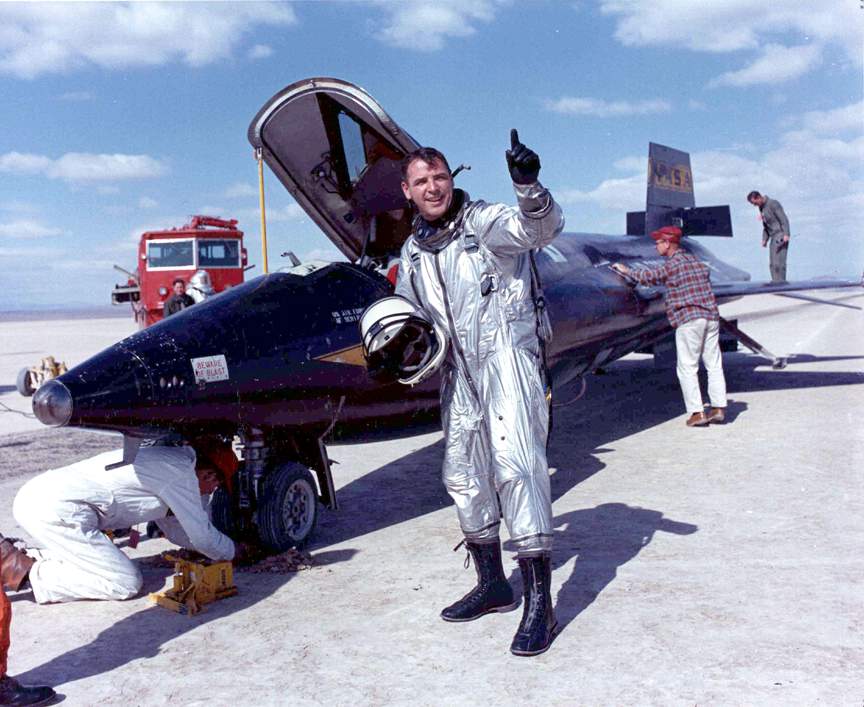
© 2015, Bryan R. Swopes
This article stated that Bob Whites record of “314,750-foot altitude (95,936 meters) also established a Fédération Aéronautique Internationale (FAI) world altitude record, which will probably never be broken.”
The record is now held by Brian Binnis who on October 4, 2004 flew SpaceShipOne to 367,490 feet. FAI Record ID #9881.
(would you send me your email address?)
Thank you, Jim. It’s apples vs. oranges, I’m afraid. Major General White’s FAI Record (#9604) is Class C (Powered Aeroplanes), Sub-Class C-1 (Land Planes), for “Altitude Gain, Aeroplane Launched from Carrier Aircraft”: 82,190 meters (269,652 feet). The record was retired due to changes in the sporting code. Commander Binnie’s FAI Record is Class P (Space Records), Sub-Class P-1 (Suborbital Missions) for “Altitude above the Earth’s surface with or without maneuvers of the aerospacecraft”: 112.01 kilometers (69.60 statute miles). Commander Binnie exceeded the record set earlier by Michael W. Melville. Rear Admiral Alan B. Shepard’s FAI record for Altitude (#9519), 186.307 kilometers (115.766 statue miles), remains the current record for Class K (Space Records), Sub–Class K-1 (Suborbital missions).
Thank you for your article about Robert White. I had the pleasure to meet and talk with him on several occasions when I was researching my book “The X-15 Rocket Plane, Flying the First Wings into Space.” He invited me to his home in Florida, and was very generous with his time and recollections. One of my favorite memories was when he described being shot down in the final days of WW2, and attempting to avoid capture. You could tell his mind was right back there experiencing it as if for the first time, ducking, evading, and running. It was a vivid account, even more personal than many of his X-15 memories. A wonderful man who will be missed. Same can be said of the other X-15 pilots as well. It is very sad that only Joe Engle survives today out of those 12 outstanding pilots.
Thank you, Michelle. I very much enjoyed your book, THE X-15 ROCKET PLANE, by the way. General White was an interesting man, and I don’t think that his life and accomplishments are as widely known as they should be. While Jack Summers’ book, HIGHER AND FASTER, was a good start, it seems that there is much more to be told, and in greater detail. Re: Joe Engle, his hand-flying of the space shuttle re-entry has to put him at or near the extreme pinnacle of “World’s Best Pilots”. Thank you for visiting TDiA. Michelle. I am honored.
So glad that you enjoyed my book. It was a labor of love over 30 years to finally be able to tell the stories of the X-15 and those involved with the program. I was honored to be able to speak to 9 of the 12 pilots, and so many others who helped make it the most amazing aircraft that ever took to the sky. I enjoyed “Higher and Faster” as well, but was surprised at how much was left out. As for Joe Engle, I definitely agree with your assessment. I had the great pleasure to share the stage with him, talking about the X-15, at the USAF Academy this past January. Also last summer I was the moderator of a panel that headlined Engle, along with several other guys from the X-15 program at the annual Spacefest event in Tucson. It is wonderful that these people are still out there, but unfortunately their numbers become smaller every year. A great brain trust that is disappearing.
Walter Gordon sent your link to me this morning, and I am very happy that he did. I spoke to their AIAA Niagara Frontier section of the AIAA a few weeks ago. A great group of people up there, many of whom used to work, or are associated in some way, to Bell Aircraft/Aerospace and their X-plane and and other programs.
Growing up, when most boys’ heroes were baseball and football players, mine were test pilots and astronauts, and I have always had a special appreciation for the X-15, with photos taped to the walls of my bedroom. Kids on my street could tell you about Don Drysdale’s statistics, but I knew about Bob White’s rocket flights. My thanks to Colonel Gordon for sending the link to TDiA. —Bryan
Great article Bryan, There is one slight correction you need to make on the caption below the Life Magazine cover. General White’s son is Greg not Gary. Having known him while I lived at Edwards AFB, I knew Greg’s dad as just one of the many great test pilots that lived there. It wasn’t until I read about him after his passing in 2010 that I learned that Greg’s dad was one of the most highly decorated pilots of all time. I was impressed to learned that he had been awarded the Air Force Cross, both the Air Force and Army Distinguished Service Medals, 4 Silver Stars, the Legion of Merit, 5 Distinguished Flying Crosses, the Bronze Star and 17 Air Medals. I also learned he was the first Air Force pilot to be awarded Astronaut wings. Needless to say I was impressed to have met known and met him. Again great article.
Thank you, Tom.
Thank you for your article about my dad. I am his daughter, Pamela White, and he is greatly missed by me and my siblings. There is one correction, however, to the caption under the picture of the Life Magazine. My brother’s name is Greg, not Gary. Thank you again for the tribute to my dad.
Thank you, Ms. White. I am working on a more comprehensive biographical article about your father. I will let you know when it is published.
Great article. General White was a remarkable man and an outstanding pilot. I’ve always fascinated by the X15. Most folks, even those interested in aviation have no idea of how much this aircraft contributed to NASA’s early work on space flight. The amount of information gleaned from the X15 flights was enormous.